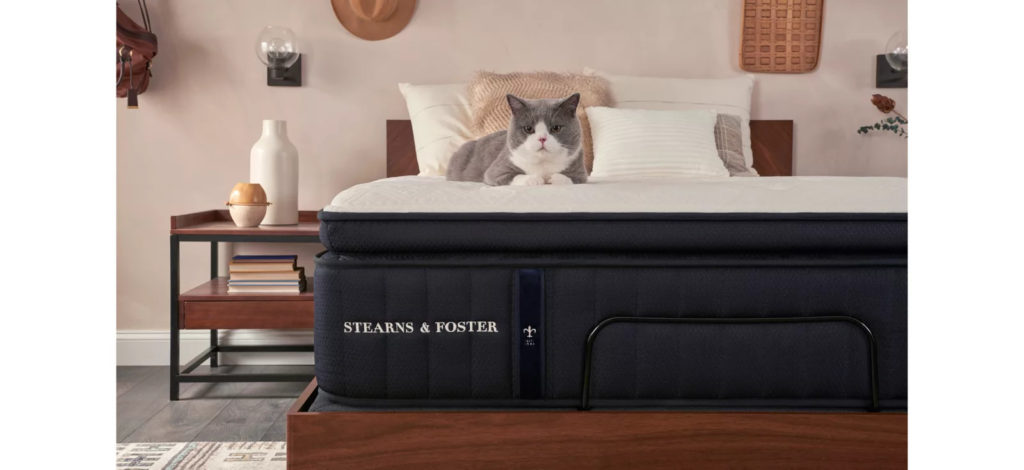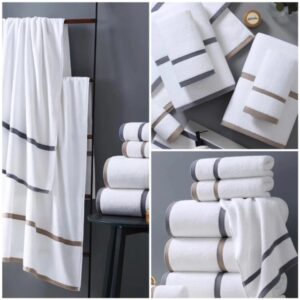Table of Contents
Last Updated on September 12, 2022
A pillowtop mattress is a type of mattress that features a layer of soft cushioning material sewn to the top surface. It is usually about two to four inches thick and is made of materials including memory foam, latex, wool, or cotton. Pillowtops create a luxuriously plush feel when you lie down, making them a popular choice for those who want a comfortable sleeping experience.
But is a pillowtop mattress perfect for you? The answer is ” yes” and “no.” It all depends on the type of sleeper, sleeping position, and the sleeper’s biometrics, such as weight, build, and mattress construction.
Understand the sleeping position
As we all know, there are three main sleeping positions: side, stomach, and back. Each of these has different needs when it comes to a pillowtop mattress.
Worth to mention that the majority of us are combination sleepers. In other words, we are not strictly limited to one sleeping position.
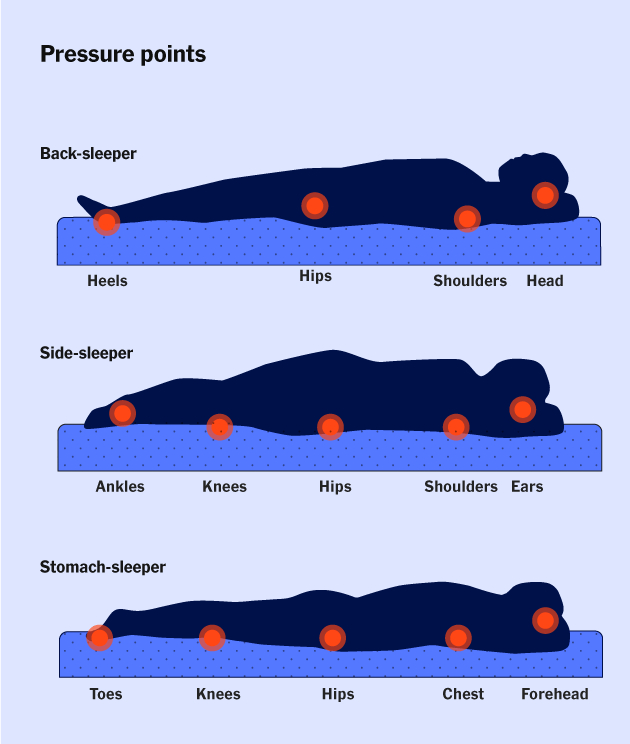
A pillowtop mattress is usually best for back and side sleepers due to its plush, conforming feel. The soft, cushiony top layer provides extra support and pressure relief for these sleepers who need to maintain alignment in their spine while they sleep. A pillowtop mattress is often too soft for stomach sleepers, who need a firmer mattress to keep their hips sinking too far into the bed and throwing off their alignment.
Mattress Firmness Level
Sleep experts believe people need to sleep on a mattress with enough support. When a person lies on a harder mattress, the bones are under greater pressure, while the muscles can be relaxed so that they do not compress the blood vessels, which helps blood circulation. On the other hand, a hard mattress can effectively prevent the waist from sinking during sleep, conducive to smooth breathing. Inhalation of more oxygen will also improve the quality of sleep.
However, new research results point out that too hard of a mattress is unsuitable for people with back pain, scoliosis, rheumatism, arthritis, and other health problems. Sleeping on a medium-hard mattress can be more effective in soothing the symptoms of such discomfort.
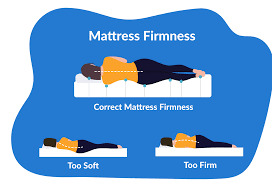
Mattress hardness is an essential factor to consider before purchasing, even though there is no uniform industry standard for a mattress’s firmness rating. Most manufacturers label the mattress as soft, medium, and firm.
In addition to the sleeping position, different body build, weight, and height will impact which degree of firmness.
Sleeping Position | Mattress Firmness | Benefits | Recommended Weight |
Side Sleeper | Medium Soft |
| 132-176lbs |
Back Sleeper | Medium Firm |
| 176-220lbs |
Stomach Sleeper | Medium Firm-Firm |
| 176-280lbs |
Combination Sleeper | Medium Firm |
| 176-220lbs |
What to consider when choosing a pillowtop mattress
These are the most important factors when buying a pillowtop mattress:
Type of mattress: hybrid or innerspring
Pillow tops are always found exclusively on innerspring and hybrid mattresses, aiming to supply the mattress with an enormous comfort layer section to complement the coils.
- Innerspring: The innerspring mattress is the most traditional type of mattress. This kind of mattress is also relatively inexpensive, contributing to its popularity. However, one downside of innerspring mattresses is that they are not as good at isolating motion as other mattresses. With an additional layer on top of the innerspring, a pillowtop mattress is excellent at reducing movement. If your partner moves around a lot during the night, you are more likely not to feel the movement much.
- Hybrid: A hybrid mattress combines the best features of both innerspring and foam beds. A hybrid mattress’s most common comfort layers are memory foam, polyfoam, latex, or a blend of these. These materials provide a balance of support, pressure relief, and cooling, making them ideal for people who want the best of both worlds. Pillowtop hybrids take this last part up a notch, offering increased comfort while retaining the coils’ benefits.
Foam Materials
The most commonly used foam in mattresses is memory foam, which can adjust the shape according to the user’s body type, fit the body curve, and slow down when the user gets up. The rebound makes it difficult for people to turn over on the memory foam mattress, and they are easy to overheat.
The best pillowtop materials are Latex foam and Gel-infused memory foam.
Latex foam is a popular choice for mattresses, as it offers several advantages over other materials. It is more elastic than memory foam, bouncing back quickly and providing better support. It also does not trap heat as quickly as memory foam, making it more comfortable to sleep on.
Gel-infused memory foam is the newest type of memory foam on the market. Gel beads are added to the traditional memory foam formula to create a slightly faster mattress with better support and dissipate heat. Furthermore, Gel-infused memory foam is also a good choice for people who suffer from back pain or other types of joint pain because gel beads help reduce pressure points by evenly distributing weight across the surface of the mattress. It is also hypoallergenic and resistant to dust mites, making it a good choice for people with allergies or asthma.
Firmness
Pillowtop mattresses are designed to add an extra layer of softness to the bed’s surface. This benefits people who find that traditional mattresses are too firm and uncomfortable. However, pillow tops are not always the best option for people who prefer a firmer surface. Over time, pillowtop materials will break down and become plusher. As a result, people seeking a firmer mattress may find that their pillowtop eventually becomes too soft. For this reason, it is often better to buy a mattress specifically designed to be firm, such as a latex mattress. Pillow tops made from Latex mattresses will retain their shape and firmness over time, providing a consistent sleeping surface.
Temperature Regulations
One of the main complaints people have about pillow top mattresses is that they tend to heat trap. It can be a huge issue, especially during the summer months. However, choosing suitable materials can significantly reduce the risk of overheating. Latex is an excellent choice for regulating mattress temperatures. It helps to dissipate heat and keep the mattress cool throughout the night.
Another option is to choose a mattress with built-in temperature regulation features, such as gel-infused memory foam, which helps to keep you cool and comfortable all night long.
Sleep Trail Period
When shopping for a mattress, choosing one based on how it feels in the showroom can be tempting. However, we recommend choosing a mattress with a generous sleep trial period and sleeping on it for at least 30 nights to understand how it will hold up in the long run. Pillowtop mattresses tend to have an immediate cushioning that can make them feel luxurious and inviting, but this may not hold up over time. Allowing your body this time to adjust can give you a better idea of whether the mattress will be supportive enough in the long run.
Third-party Certification
When choosing a new mattress, it’s important to research to ensure you’re getting a quality product. One way to do this is to look for third-party certifications. Organizations grant these certifications without connection to the mattress manufacturer, so you can be confident that they’re unbiased. There are many different third-party certifications, but some of the most important ones to look for are the CertiPUR-US certification (for foam mattresses), Oeko-Tex Standard 100 (for harmful textile substances), and the Global Organic Textile Standard certification (for organic materials). With these third-party certifications, you can be sure you’re getting a high-quality mattress that will provide lasting comfort and support.
Pros and Cons of a Pillowtop Mattress
Below are some pros and cons of pillowtop mattresses.
Pros | Cons |
Extra Comfort: By adding an extra layer of comfort, they can provide a better sleeping experience overall. | Edge Support: The pillow-top is sewn on top of the mattress and not attached around the perimeter, which has a less edge support. It is inconvenient when getting in and out of bed. |
Affordability: Pillow-top innerspring are of cheap option in comparison to the hybrid models | Heat retention: pillow-top mattresses made from memory foam or Polyurethane foam are prone to retain more heat. |
Motion Isolation: great at reducing movement and keeping you comfortable while you sleep. | Durability: pillow-top mattresses tend to deteriorate faster than non-pillow-top models because they contain softer foams near the surface |
Contour to Body | Insufficient support: particularly for stomach sleepers and those who weigh more than 230 pounds |
Temperature Regulation: Latex and gel-infused pillowtop are designed to regulate the temperature | Deep-Pocket Sheets: have a higher profile than traditional mattresses. This may require the use of deep-pocket sheets. |
Best pillowtop mattresses in Raymour & Flanigan
Shopping for the right pillowtop mattress can be a daunting task, but with the help of Raymour & Flanigan, you can find the perfect mattress for you. You can schedule a physical or virtual consultation, and plenty of noted brand mattresses are available. You have 45 days for a sleep trial until you find the right fit. Find your perfect pillowtop mattress today!
Brand | ||
Sealy Performance Hanover Street plush pillowtop | ||
Beautyrest Black C Class Luxury Plush Pillowtop Mattress | ||
Sealy Posturepedic Mohegan Bluffs Medium Euro Pillow Top Mattress | ||
Aireloom Pegasus Luxury Firm Luxetop Mattress | ||
Stearns & Foster Hurston Luxury Firm Euro Pillowtop Mattress |
Q&A
Euro-top vs. Pillow-top
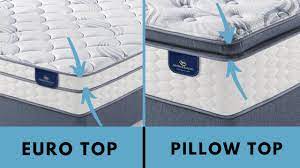
Euro-tops are pillow tops that are more integrated into the mattress. They may still have piping to differentiate them from the standard comfort layers, but typically the edges are stitched in and flush with the rest of the mattress. Euro-tops typically feature denser materials instead of the extra-plush fill of a standard pillowtop.
Because they don’t have a gap around the perimeter, Euro-top mattresses commonly have better edge support than standard pillowtop mattresses. They also tend to be more durable since there is less material that can shift or settle over time. Euro-tops are available in a wide range of prices and firmness levels, making them a good option for people who want the benefits of a pillowtop without sacrificing support or durability.
How long should I replace the Pillowtop mattresses?
The quality of a mattress and its overall construction play a significant role in its durability. That said, pillowtop mattresses deteriorate faster than non-pillow-top models because they contain softer foams near the surface. As these foams lose shape, the mattress will feel uneven, and you may not receive enough support. Pillow tops with firmer comfort layer materials can last longer – but even then, owners may notice indentations or impressions within 5 -7 years of continuous use, if not sooner.
Is a pillowtop a mattress topper?
A mattress topper is a bed mattress accessory. People add a mattress topper to make their bed softer with a thicker overall comfort layer. It is sold separately. While a pillowtop is sewn on the top of the mattress, which is an integral part of the mattress.
Realicozy.com may get compensated if you purchase from our independent affiliate links in the article.

